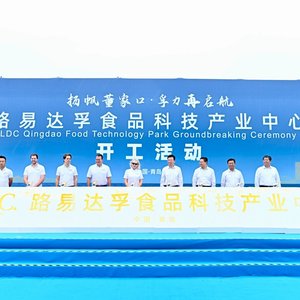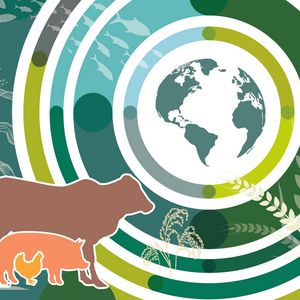Zero-exchange recirculating technology allows marine species to be farmed in freshwater environment
A UK company, DIOBAS, claims to have found a completely new way to rear cod, tuna, seabass and other species in freshwater at any location in the world in a controlled environment, even on the most unproductive terrain any distance from the sea without quotas and approximately one third below current market price.
The decision by Diobas to raise saltwater species in a controlled freshwater habitat has proved extremely difficult to accomplish and involved the design of many new components including revolutionary particle fractionators, with controlled natural daylight sequences, and even tide movements manipulated as part of the controlled environment. The end result is strong healthy fish, free from disease and the usual parasites that plague attempts to rear these fish in salt water pens.
It is not the intention of DIOBAS to supply cod or other species of fish to the marketplace but to provide the technology for others to do so. Diobas said that within a fully automated and controlled freshwater environment, these fish thrive with a growth rate three times faster than in the wild. Their welfare has been the primary factor. The freshwater system can be operated in a wide variety of sizes with the smallest producing in excess of 100 tons of Cod, the first crop being ready for sale 18 months to two years after the installation.
The entire system is self contained and once filled with water will not require a re-supply of fluids. The main tank is connected to the second tank and water is pumped between the two with a tidal replication sequence at twice the normal rate.
Coupled with simulated lighting operated with 12 hour daily cycles and seasonally comparative moon cycles, the fish are encouraged to develop at almost twice the normal metabolic rate, a further 30% growth rate is achieved through an enriched feeding program.
A series of Ultra Violet units and our revolutionary particle fractionators have overcome the problem of efficient bacteria removal. Whilst the main tank is almost entirely dedicated to the growth of the cod, the second tank performs several tasks. Primarily it acts as a giant biological filter and as well as fingerlings, will contain a variety of secondary income sources with filter feeding crustaceans, algae, crayfish and other sought after shell fish. When the main tank is cropped, the fish from the second tank are added and the whole procedure replicated to provide continuity.
Once the water has circulated through this second tank it will be returned to the main tank in tidal sequence. The whole system is self contained and therefore cannot contaminate or interact with anything outside the building and there is virtually no waste as all the bacterial content is absorbed by the organisms in the second tank.
The company claims that this is the first time a truly self contained environment has ever been achieved in either fresh or salt water.
"The transition for cod from saltwater to live in freshwater is an absolutely remarkable achievement. This success will remain our secret at this early stage, particularly as we would like to carry out research on other species in the future but suffice to say that no drugs or any genetic modification are used, the cod are entirely natural and thrive in this simulated environment".
The whole principle is geared to keeping the cod themselves stress free. The concentration of fish is a little less than would be found on a salmon farm with the important difference that in the freshwater system the environment is totally controlled. A density of 35 to 40 kg of fish per cubic metre allows more than adequate space. Reducing the density would gain nothing as the cod habitually shoal and one would just end up with large areas of empty space.
Their predatory instincts are also catered for as the food is introduced in a unique way through turbulent currents and therefore ‘on the move’ which encourages competition and active feeding. Muscle tone is kept at its optimum as there are strong and varying currents designed within the environment so there is no difference between wild cod and those reared in our freshwater system.
Diobas is seeking investment to take the technology to the next stage of building a full scale research and production facility in the UK that could be used to display the system to international buyers. This full scale 2 million gallon Freshwater System facility would clearly provide its own income and be a valuable and essential part of our expansion. For more information visit: http://www.diobas.com










